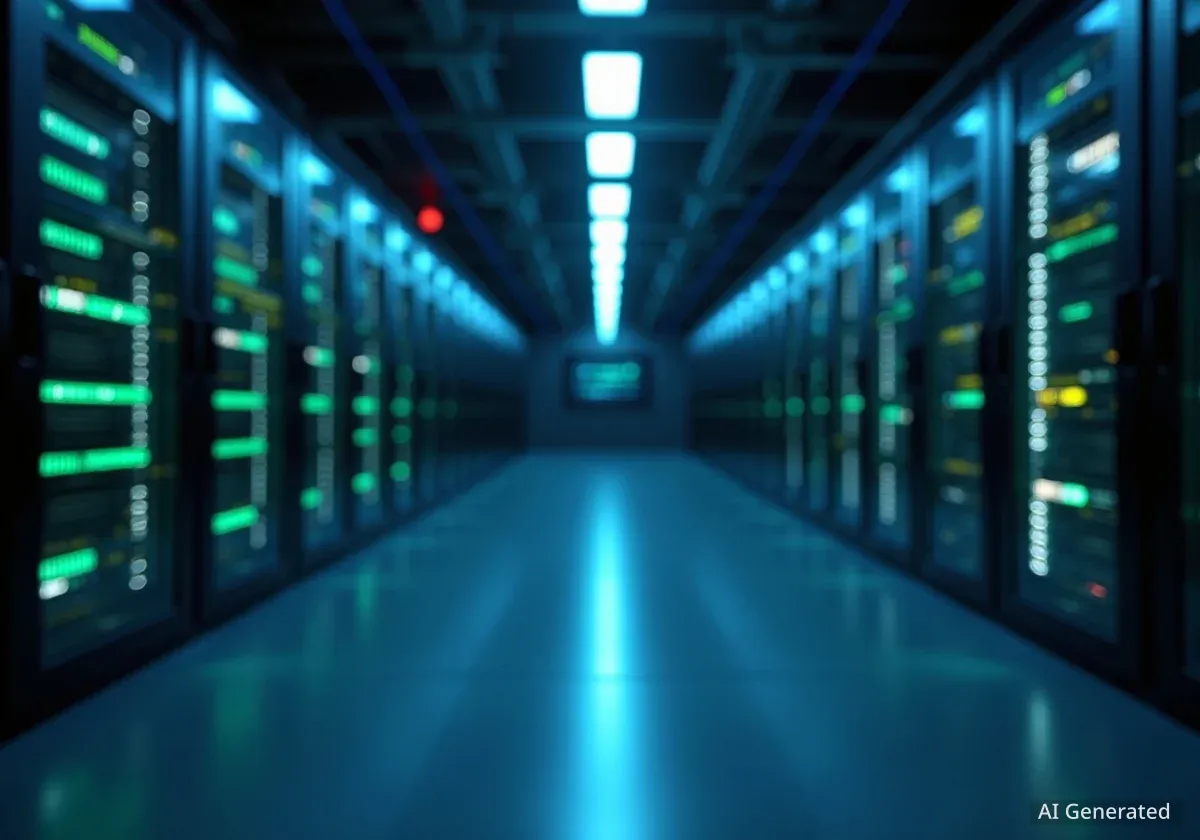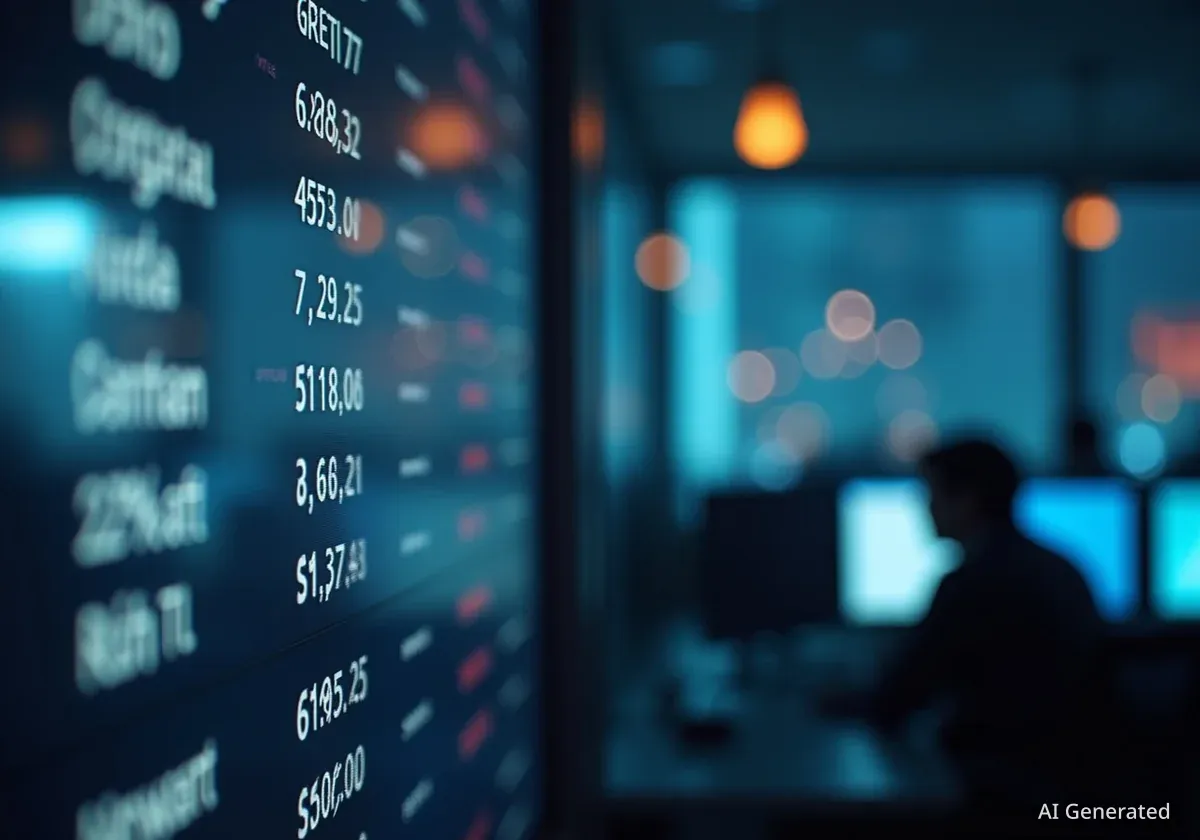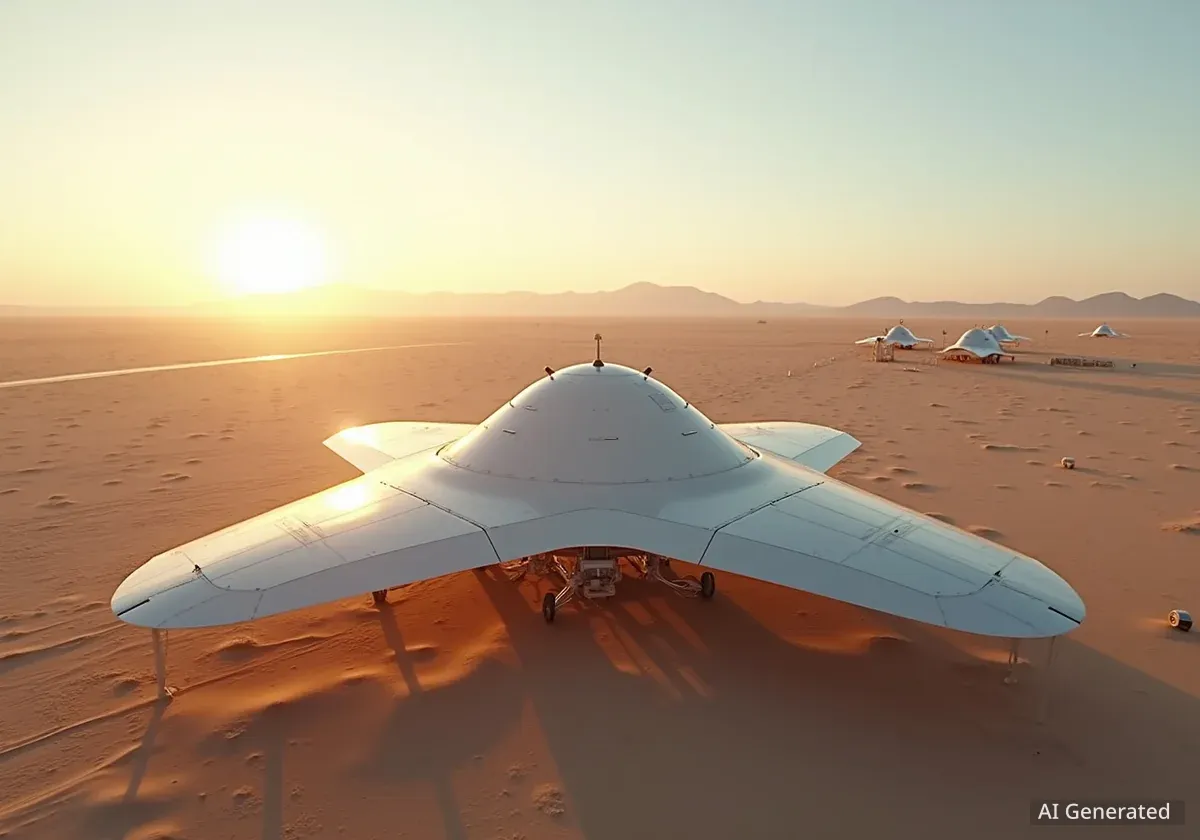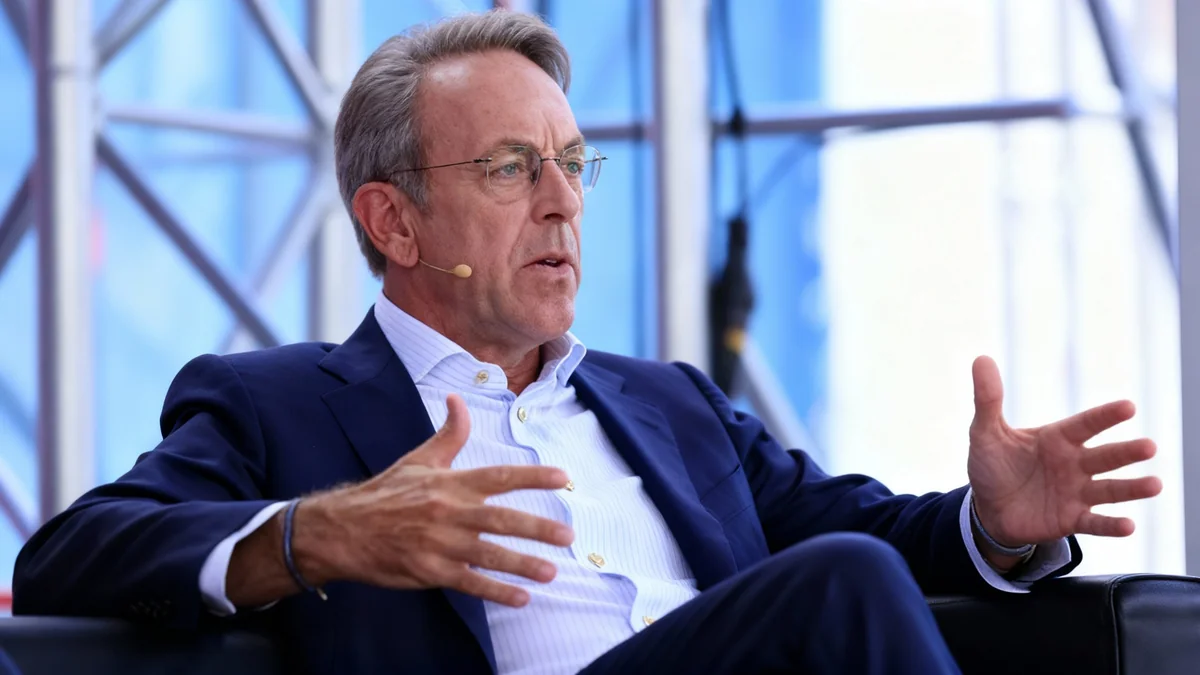Bank of America has reaffirmed its positive outlook on Nvidia, maintaining a buy rating and a $235 price target for the company's stock. The analysis comes as prominent technology leaders and market experts debate whether the rapid growth in artificial intelligence constitutes a speculative bubble.
In a note to clients, analysts led by Vivek Arya addressed recent concerns by highlighting fundamental differences between the current AI infrastructure expansion and the dot-com bust of the early 2000s, suggesting the current market has a more solid foundation.
Key Takeaways
- Bank of America reiterated a "Buy" rating for Nvidia stock with a price target of $235.
- The bank's analysis contrasts the current AI build-out with the dot-com bubble, citing stronger fundamentals.
- Nvidia reported a 56% year-over-year revenue increase to $46.7 billion for its second fiscal quarter of 2026.
- Several tech CEOs, including Sam Altman and Pat Gelsinger, have acknowledged bubble-like characteristics in the AI market.
- BoA analysts argue that high utilization, stable financing, and different monetary policy create a more resilient environment for AI growth.
Nvidia's Strong Financial Performance
Nvidia's central role in the artificial intelligence sector is supported by its recent financial results. The company continues to demonstrate significant growth, driven by high demand for its AI-focused processors.
On August 27, Nvidia announced its earnings for the second quarter of fiscal year 2026. The report showed a net income of $26.4 billion, which is a 59% increase from the $16.6 billion reported in the same quarter of the previous year.
Q2 2026 Financial Highlights
- Revenue: $46.7 billion, a 56% increase year-over-year.
- Gross Margin: 72.4%, compared to 75.1% in Q2 FY2025.
- Diluted Earnings Per Share (EPS): $1.08, up from $0.67 in the prior year's quarter.
Looking ahead, Nvidia provided a positive outlook for the third quarter of fiscal year 2026. The company expects revenue to be approximately $54.0 billion, with a potential variance of 2%. The forecast also projects a gross margin of 73.3%, plus or minus 50 basis points. Notably, this guidance does not assume any shipments of its H20 AI chips to China.
The Broader AI Bubble Discussion
The conversation about a potential AI bubble has intensified, with several influential figures in the technology industry sharing their perspectives. These opinions vary, but many acknowledge the presence of speculative excitement.
OpenAI CEO Sam Altman stated in an August interview that he believes investors are currently overexcited about AI. Similarly, former Intel CEO Pat Gelsinger bluntly agreed when asked if the market was in an AI bubble, saying, "Of course!" though he predicted it would not end for several years.
"I do think that there's definitely a possibility, at least empirically, based on past large infrastructure buildouts and how they led to bubbles, that something like that would happen here," said Mark Zuckerberg in a podcast interview, acknowledging historical parallels.
Amazon founder Jeff Bezos offered a different comparison, likening the current situation to the biotech bubble of the 1990s—an "industrial bubble" that, despite investor losses, ultimately produced valuable innovations.
Nvidia's own CEO, Jensen Huang, has pushed back against direct comparisons to the dot-com era. He argued that the circumstances today are "dramatically different" from what occurred in 2000, suggesting a more tangible technological shift is underway.
Bank of America's Contrarian Analysis
In response to what they termed "AI doom headlines," Bank of America analysts provided a detailed counterargument. While acknowledging that large-scale infrastructure projects carry an inherent risk of overbuilding, they identified key distinctions between the current AI expansion and previous market busts.
Four Key Differences from the Dot-Com Era
The bank's report outlines four primary reasons why the current AI investment cycle is more robust than the one that preceded the dot-com crash:
- High Utilization: Unlike the underused "dark fiber" optic cables of the dot-com era, current AI computing infrastructure is seeing high and immediate utilization, indicating real demand.
- Stable Financing: Today's investments are largely driven by the capital expenditures of major, well-funded cloud service providers, not the speculative, debt-fueled financing that characterized many dot-com companies.
- Favorable Monetary Policy: The U.S. Federal Reserve is more likely to lower interest rates than to raise them, a stark contrast to previous market crashes that often coincided with rising rates.
- Reasonable Valuations: Nvidia's valuation, while high, is not comparable to the 100-plus price-to-earnings (P/E) ratios of dot-com leaders like Cisco and Nortel at their peak.
Limiting Factors on Overbuilding
Bank of America also noted that physical constraints will likely prevent excessive construction of data centers. The availability of power, water, and suitable land acts as a natural brake on unchecked expansion, helping to align capacity more closely with actual demand.
Furthermore, analysts see a relatively low risk for Nvidia from U.S.-China trade tensions. They estimate that AI vendors have less than 10% exposure to China, placing them in a lower-risk category compared to other semiconductor sectors.
Investment Outlook and Identified Risks
Based on their analysis, Bank of America analyst Vivek Arya reiterated a "Buy" rating for Nvidia. The firm's $235 price target is based on a 37-times multiple of its estimated calendar year 2026 earnings, a figure that falls within Nvidia's historical P/E range of 25 to 56.
The report states that this valuation is justified by Nvidia's dominant market share in the rapidly growing AI compute and networking markets. However, the bank also outlined several potential downside risks for the company.
Potential Headwinds for Nvidia
Despite the positive outlook, investors should remain aware of several challenges:
- Market Weakness: A slowdown in the consumer-driven gaming market could impact a key revenue stream.
- Increased Competition: Major public companies are investing heavily in their own AI chip development.
- China Restrictions: The full impact of U.S. restrictions on high-end chip shipments to China remains a variable.
- Sales Volatility: Sales in emerging enterprise, data center, and automotive markets can be unpredictable.
- Government Scrutiny: Nvidia's dominant market position in AI chips could attract increased regulatory attention.
The bank's assessment concludes that while risks exist, Nvidia's leading position in a transformative technology market supports its current valuation and positive investment thesis.





